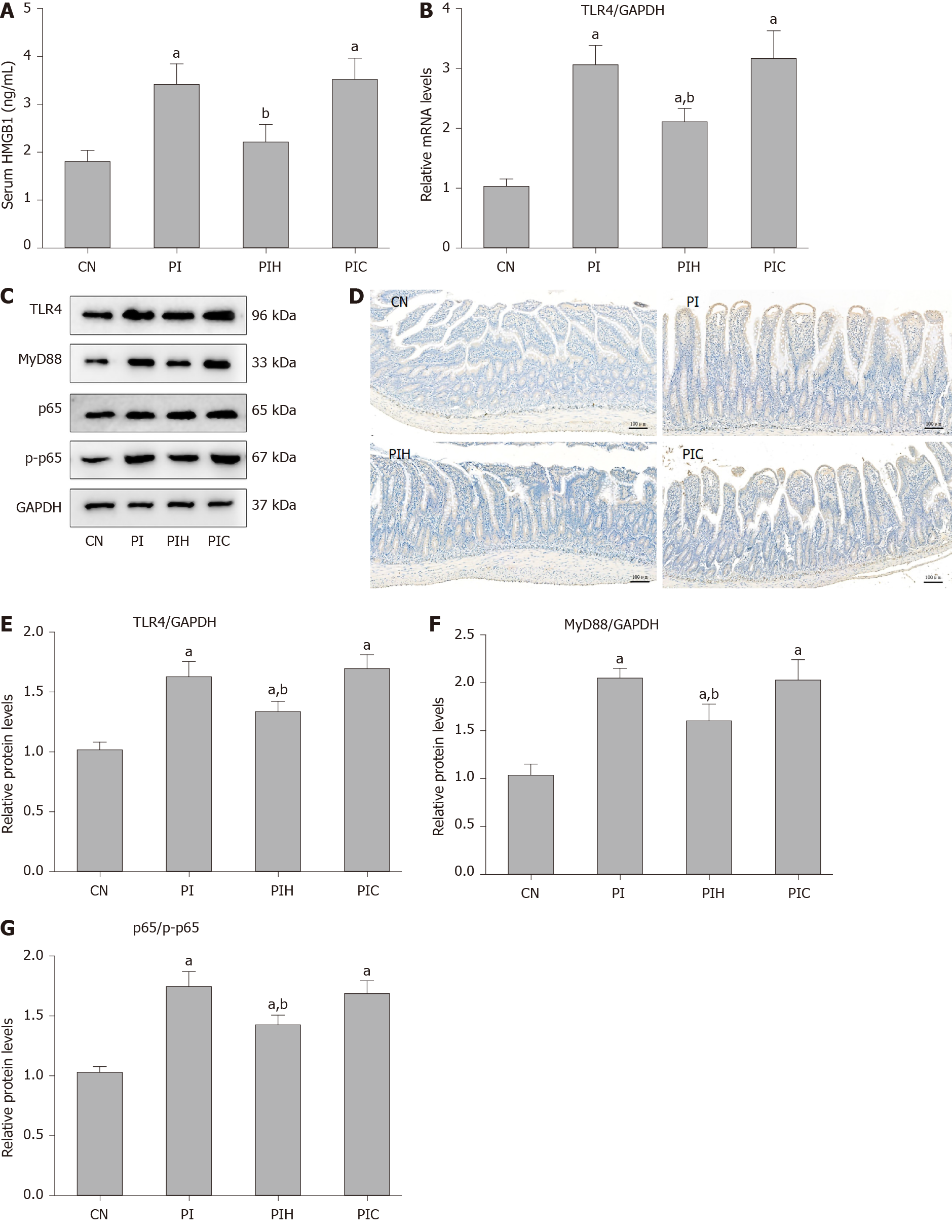Copyright
©The Author(s) 2021.
World J Gastroenterol. Mar 7, 2021; 27(9): 815-834
Published online Mar 7, 2021. doi: 10.3748/wjg.v27.i9.815
Published online Mar 7, 2021. doi: 10.3748/wjg.v27.i9.815
Figure 5 Effects of pancreatitis-associated ascitic fluid intraperitoneal injection with or without anti-high mobility group box protein 1 neutralizing antibody on intestinal toll-like receptor 4 signaling pathway in cerulein-treated rats.
A: High mobility group box protein 1 in serum; B: Toll-like receptor 4 (TLR4) mRNA measurement by real-time polymerase chain reaction; C: Immunoblotting of TLR4, myeloid differentiation factor 88 (MyD88) and p65 protein expression and p65 phosphorylation level from intestine samples; D: Representative immunohistochemical images of TLR4 in intestinal tissue (bar = 100 μm); E-G: Densitometry analysis of TLR4, MyD88 and ratio of p65 to phosphorylated p65. Data are expressed as means ± SD, n = 6 enzyme-linked immunosorbent assay results per group; means ± SD, n = 3 immunoblotting results per group. aP < 0.05 vs control group; bP < 0.05 vs pancreatitis-associated ascitic fluid injection group. HMGB1: High mobility group box protein 1; CN: Control; PI: Pancreatitis-associated ascitic fluid (PAAF) injection; PIH: PAAF and 200 μg anti-HMGB1 neutralizing antibody; PIC: PAAF + control lgY; TLR4: Toll-like receptor 4; MyD88: Myeloid differentiation factor 88; p-p65: Phosphorylated p65; GAPDH: Glyceraldehyde-3-phosphate dehydrogenase.
- Citation: Huang SQ, Wen Y, Sun HY, Deng J, Zhang YL, Huang QL, Wang B, Luo ZL, Tang LJ. Abdominal paracentesis drainage attenuates intestinal inflammation in rats with severe acute pancreatitis by inhibiting the HMGB1-mediated TLR4 signaling pathway. World J Gastroenterol 2021; 27(9): 815-834
- URL: https://www.wjgnet.com/1007-9327/full/v27/i9/815.htm
- DOI: https://dx.doi.org/10.3748/wjg.v27.i9.815









